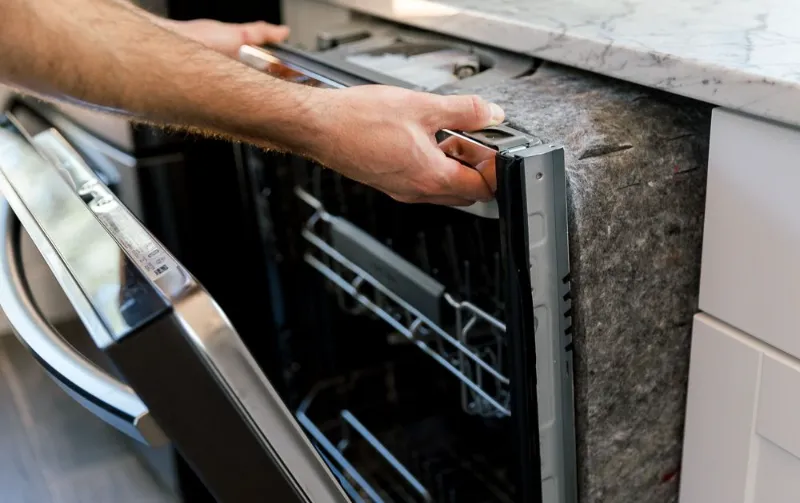No, you cannot pull out a dishwasher without disconnecting it first. It requires detaching the water supply, drain, and power connections.
Attempting to move a dishwasher without proper disconnection poses risks to both the appliance and the surrounding environment.
A dishwasher is typically connected to the home’s water supply, drainage system, and power, all of which require disconnection before the unit is moved to prevent leaks, electrical hazards, or damage to the appliance.
It is essential to ensure that all connections, including hoses and electrical cables, are safely disconnected and that the dishwasher is empty of any dishes and water.
Care should also be taken to protect the kitchen’s flooring and cabinetry when sliding the dishwasher out.
Seeking professional assistance may be the safest way to maneuver the dishwasher if you’re unsure about the disconnection process and handling the appliance.

Assessing The Space For Dishwasher Pull-out
Before attempting to pull out a dishwasher, it’s crucial to assess the surrounding cabinetry.
Ensure that the dishwasher unit is not wedged too tightly between cabinet walls, as this can complicate the removal process.
A snug fit might necessitate slight adjustments or removal of neighboring cabinets to allow room for maneuvering the appliance out.
Utilizing Tools For Smooth Extraction
Employing furniture sliders for smoothly pulling out a dishwasher in a constrained space can be a game-changer.
These simple yet efficient tools minimize friction, allowing you to glide the appliance over the floor with ease.
Ensure the sliders are placed beneath each corner of the dishwasher for optimal weight distribution.
For added precaution, check that the floor is clean and free of debris to prevent scratches or snags during movement.
Keep a steady pace and a firm grip on the dishwasher to maintain control throughout the process.
Remember, sliding out the dishwasher does not disconnect its plumbing or electrical connections, so proceed with caution to avoid damaging them.
Safely Maneuvering The Dishwasher
Attempting to slide out a dishwasher can be a delicate task, especially without disconnecting it first.
Before starting, ensure you have enough room to maneuver and protect your flooring by placing a thick towel or a piece of cardboard in front of the appliance.
Carefully open the door and inspect for any items that could shift, as securing loose internal racks is crucial for preventing damage.
With the dishwasher door closed, gently rock the dishwasher from side to side to determine if it has any play.
This will also help to identify if it’s snagged on anything. The goal is to achieve a smooth, controlled movement.
Use a steady grip on the dishwasher’s sides and apply even pressure to ease it forward.
Be vigilant not to tug on the power cord or plumbing, as these are not designed to handle such force.
Remember to work slowly to minimize any possible strain on the connections, ensuring a safe and damage-free process.
Frequently Asked Questions For Can You Pull Out A Dishwasher Without Disconnecting It
Is Disconnecting A Dishwasher Necessary?
No, you can partially pull out a dishwasher for minor repairs or cleaning without disconnecting it, but full removal requires disconnection.
Can Sliding Out A Dishwasher Damage It?
Pulling a dishwasher out improperly can damage the unit or surrounding cabinetry, so it’s important to follow the proper procedure.
What Precautions Are Needed Before Moving A Dishwasher?
Ensure the dishwasher is empty, the door is latched, and if fully removing, disconnect power, water supply, and drainage.
How Do I Access A Dishwasher’s Back Panel?
Carefully slide the dishwasher out just enough to reach the back panel for maintenance, without fully disconnecting the unit if not necessary.
Conclusion
Pulling out a dishwasher does require attention to detail and care. To avoid leaks and damage, ensure you disconnect utilities before moving them.
Remember, safety comes first, and proper steps safeguard your appliance.
For a smooth process, follow manufacturer guidelines or consult a professional.
Keep it simple; keep it safe.

